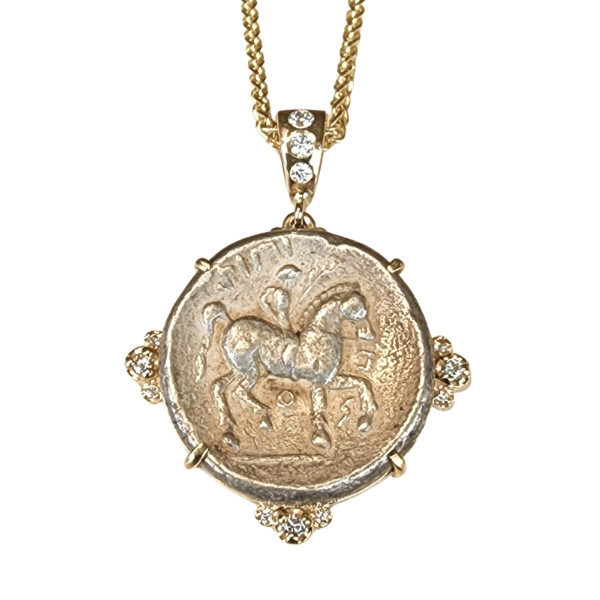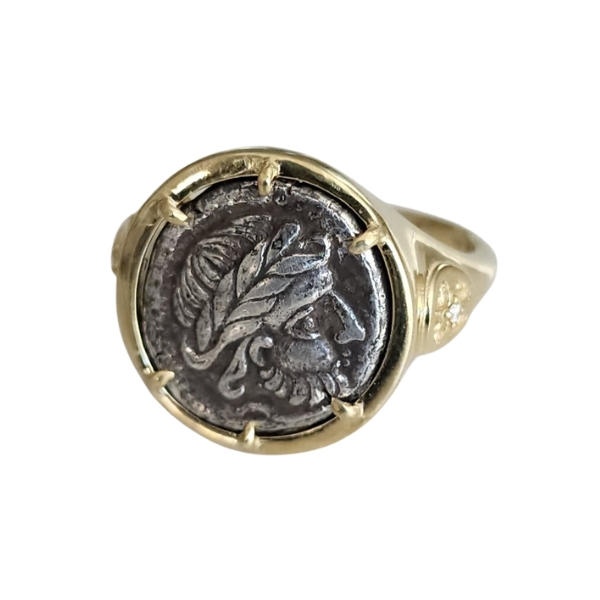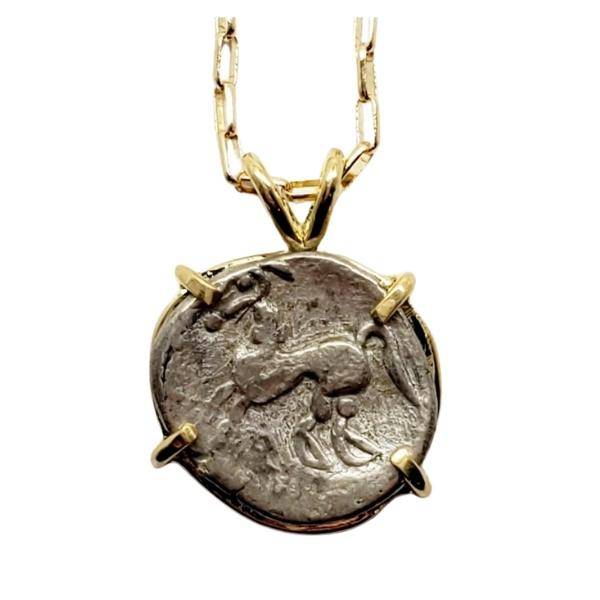Danubian Celts
Ancient Celtic coins may not be as familiar as ancient Greek and Roman coins, but the Celts were known for their craftsmanship in metalwork and jewelry, as seen in their distinctive coinage.
Geography:
The Celts were a group of European tribal societies that existed during the Iron Age (1200-550 BCE) and the Roman Empire (625 BC - 426 AD). The ancient Celts can be divided into two major periods: the Hallstatt and La Tène cultures. The Hallstatt period (800-475 BCE) represents the early phase, characterized by the emergence of Celtic society and the development of their distinctive art style. The La Tène period (450-1 BCE) followed, during which the Danubian Celts and other Celtic groups expanded their influence and established a pan-European trade and cultural exchange network. The 3rd century BC was the height of the La Tène culture, characterized by distinctive artistic styles, such as intricate metalwork, pottery, and other artifacts. The term "La Tène" is derived from the archaeological site of La Tène on Lake Neuchâtel in Switzerland.

The Danubian Celts inhabited present-day Austria, the Czech Republic, Slovakia, Hungary, and parts of Germany and the Balkans. They were a part of the wider Celtic culture that dominated much of Europe during the Iron Age. The Danubian Celts played a significant role in shaping the cultural and historical landscape of Iron Age Europe, and their interactions with neighboring peoples contributed to the dynamic changes in the region during this period. Their influence extended across Central Europe, and they significantly impacted the history of the Balkans, France, and the Iberian Peninsula.
Hallstatt:LaTene Map
By Dbachmann, CC BY-SA 3.0, https://commons.wikimedia.org/w/index.php?curid=4003285
Economic Systems and Trade:
The Danubian Celts were a tribal people with a social hierarchy that included a warrior aristocracy. They engaged in agriculture, animal husbandry, and trade, using their hillforts as centers for both economic and political activities. Their settlements were often near rivers, lakes, and hill forts for defensive purposes.
Their extensive trade networks connected them to neighboring Celtic and non-Celtic peoples. They were in contact with the Greeks to the south and the Germanic tribes to the north, enabling them to exchange goods and cultural influences. They generally relied on a barter system and goods exchange, reflecting the decentralized nature of Celtic society during the La Tène period.
The Celtic economy was primarily based on agriculture. The region's abundant natural resources, particularly salt mines, facilitated the development of a thriving economy. Trade played a crucial role in their interactions with neighboring cultures. While coins were not as widespread as in some other ancient civilizations, exchanging goods and using precious metals as currency were standard practices.
Celtic Culture and Art:
The Celts' metalworking expertise led to the creation of intricate jewelry, weapons, and other artifacts, often adorned with ornate designs that showcased their artistic flair. The Celts were renowned for their remarkable metalwork, which included intricate gold and silver torcs, bracelets, and other types of jewelry. Some items were believed to be used for portable wealth and could have been used in trade or to showcase one's social status.

Warfare played a vital role in the Celtic society, and the Danubian Celts were no exception. They were known for their fierce warriors, and historical accounts suggest that they engaged in conflicts and trade with neighboring tribes and civilizations. One of the most legendary artifacts associated with the Danubian Celts is the "Celtic Sword," a symbol of their military prowess and craftsmanship. These swords were ornately decorated and served as weapons and status symbols for their owners.
Celtic Sword and Scabbard
ca. 60 BCE
Metropolitan Museum of Art
The spiritual beliefs of the Danubian Celts were deeply rooted in nature and the elements. They held a polytheistic belief system, venerating various gods and goddesses associated with natural phenomena, such as water, forests, and celestial bodies. Archaeological findings indicate that they performed intricate burial rituals, with graves often containing valuable offerings, further emphasizing their spiritual connection with the afterlife.
Celtic Coinage:
The Danubian Celts did not have standardized coinage but instead replicated or adopted coins from neighboring cultures, mainly Greek and Roman. Celtic coins first appeared in the 4th century BCE. Celtic coins developed a unique style reflecting Celtic culture, beliefs, and mythology. While drawing inspiration from Greek and Roman coinage, Celtic coin art quickly developed its unique style characterized by intricate and abstract flowing patterns influenced by foliage motifs, spirals, triskels, and s-scrolls.
Celtic coins were more than just objects of beauty. They also served a practical purpose as a means of exchange and trade. Celtic coins were made from precious metals such as gold, silver, and bronze, and their value was based on their weight and purity. This made them a valuable commodity that could be used to purchase goods and services.

Some Celtic tribes, including those in Gaul and Britain, eventually developed their coinage systems, particularly in the form of gold staters. Abstract designs, stylized images of animals, and intricate geometric patterns often characterized these coins. The gold staters served as prestige currency and were likely used for high-value transactions to display wealth and status.
Celtic Gallo Belgic Ambiani Tribe
Gold Stater
80 BCE
Roman Contact:
The expansion of the Roman Republic during the late 3rd and 2nd centuries BC brought the Romans into contact with the Danubian Celts. During the Celtic Wars, the Celts and the Romans engaged in several conflicts. These wars culminated in the sacking of Rome by Celtic tribes in 390 BC. However, as time passed and by the 2nd century BC, the Romans had gained the upper hand in their encounters with the Celts. By the 1st century BC, the Romans had defeated the independent Celtic tribes on the Continent.
After the Roman conquest, Celtic art in most areas of Europe declined, except for Ireland, which was free of Roman control, where it remained active. Christianity in Ireland led to a renaissance of Celtic art that can be seen in manuscripts and sculpture. This is why we often associate Celtic art with Ireland, not the Continent.



